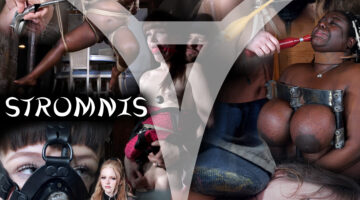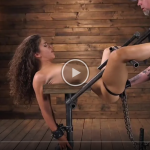Myths and Truth About Gay BDSM
Myths tend to appear anytime there are some misunderstandings about a subject. It should be no surprise that people have often made mistakes when talking about Gay BDSM. Taking some time to identify and dispel the rumors surrounding this topic will ensure that you have a greater understanding of these couples. In fact, knowing more about these people might help others come to grips with their personal situation.
Are There Differences Between Heterosexual Couples?
A pervading myth about Gay BDSM is that the relationships are inherently different from straight/heterosexual interactions. The truth of the matter is that the biggest differences between these two kinds of relationships are the genders involved as well as the willingness to define themselves as being a part of the BDSM community. The similarities are much starker, with both gay and straight people finding their romantic partners in the same manner even though the goals of their interactions are anything but similar. People seeking romance as a hetero individual and those seeking gay interactions often use dating sites in the present day. The latter prefer to set up a BDSM gay session in a secure environment, something that most people looking for love would like to experience. While the actions they take part in are vastly different, in terms of vanilla hetero people and gay individuals that enjoy BDSM, they all desire security, swift matches, and the opportunity to meet new people.
How to Choose the Right Partner
Another myth that is commonly seen in the world of gay BDSM dating is that gay people are less picky about finding their romantic partners. That could not be further from the truth, though. The reality is that gay and straight people are very particular about the kinds of individuals they get romantically connected with. When you add into the mix the concepts of BDSM, it should become clear that it’s actually more difficult for a gay person to find a partner that is into the same things as them as it is for a hetero person. As we have already mentioned, many people are supplementing their dating outcomes with technology such as dating apps and websites. That makes it much easier to find partners and choose the one that will provide the best outcomes. Now, some people may believe that the desired qualities are really different between gay and straight people. That is also not true. Mostly, people want partners that are:
- trustworthy;
- attractive;
- outgoing;
- compassionate;
- empathetic;
- adventurous.
The definitions for these terms can be very different between two people, of course. A BDSM practitioner needs to have a partner who is adventurous but also knows their partner’s feelings for safety reasons. Even though straight and gay BDSM individuals want the same features as one another, the fact is that some qualities are more important than others.
Differences in the Session
When it comes to being together in an intimate setting, a lot of myths have appeared aimed at gay people. Sadly, these myths are even more pervasive when it comes to BDSM intimacy. First off, people think that BDSM acts are meant to be cruel, punishing, and hurtful. Sure, some of the practices, like spanking, can be painful, but it’s done with the best interests of the individual in mind. It’s a unique experience that is not done to be harsh or cruel, hence why so many rules for practitioners are in place. Take a look at the differences and similarities in a “session” or “scene” compared with a typical intimate interaction.
- You’re playing a role
First things first, when you are in a “scene,” you are playing the role of someone that is not entirely indicative of yourself. You are indulging in practice and behavior.
- You have more communication with your partner
Communication between partners is paramount to the relationship being healthy. Over the years, many people assumed that BDSM relationships were not healthy because they appeared outwardly abusive. The fact is that gay people in the BDSM community frequently communicate with their partners to set boundaries and create guidelines for the scene.
- You are not stuck in a BDSM situation
A common misconception is that once the scene starts, it’s going until the end. That is never the case. Safewords of just saying “stop” are enough to bring an end to the scene as it would during other forms of consensual intimacy.
Myths pervade the world of BDSM with gay people but looking at the relationships reveals how similar they can be.
It’s necessary to examine and dispel myths about gay relationships so that people learn how they function. With less of a sense of mystery surrounding them, people will have a better chance of being open and accepting of all people. Hopefully, everyone that reads this basic guide will realize that gay people who practice BDSM are not so different from others.
















